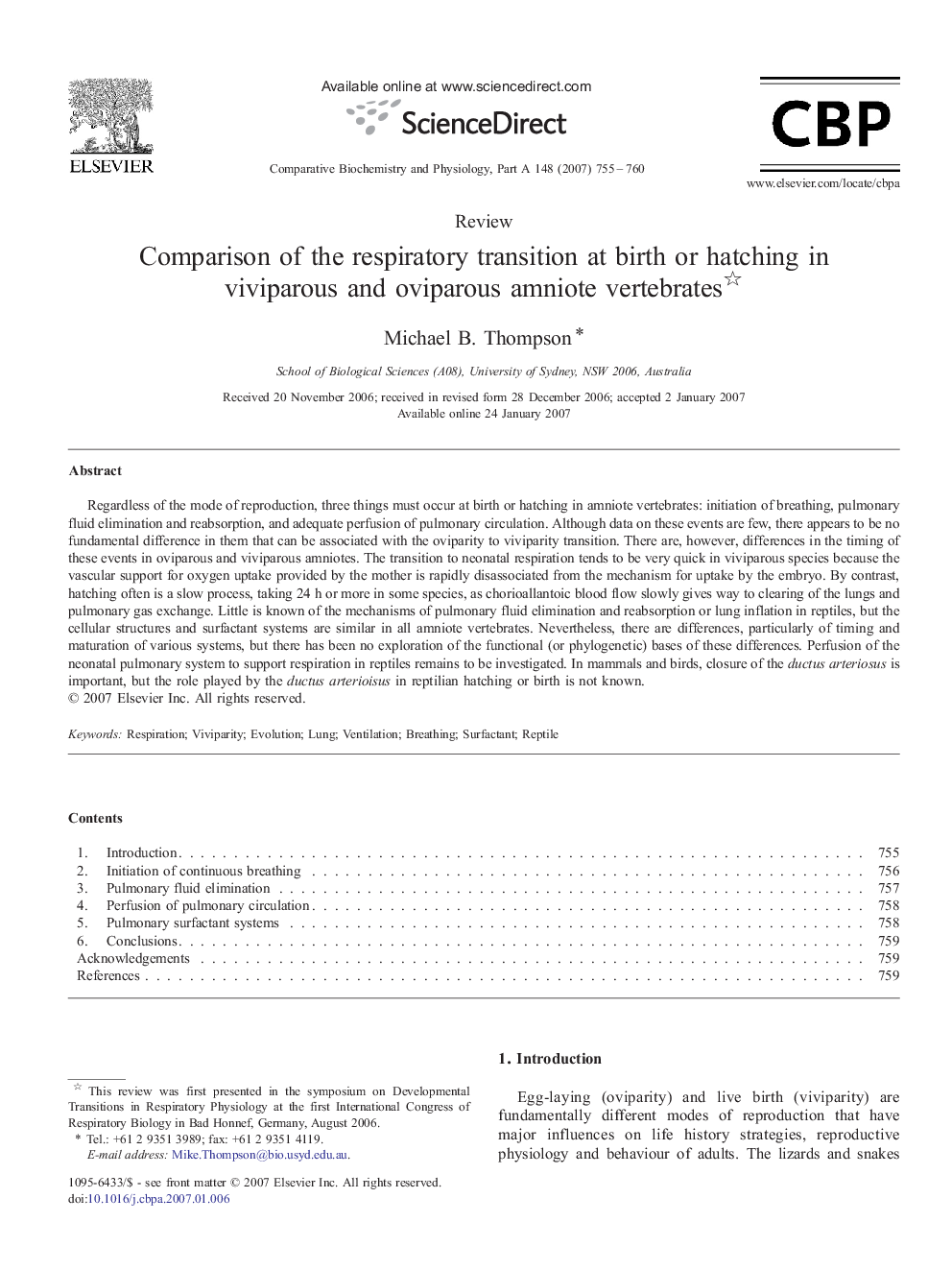| Article ID | Journal | Published Year | Pages | File Type |
|---|---|---|---|---|
| 1974067 | Comparative Biochemistry and Physiology Part A: Molecular & Integrative Physiology | 2007 | 6 Pages |
Abstract
Regardless of the mode of reproduction, three things must occur at birth or hatching in amniote vertebrates: initiation of breathing, pulmonary fluid elimination and reabsorption, and adequate perfusion of pulmonary circulation. Although data on these events are few, there appears to be no fundamental difference in them that can be associated with the oviparity to viviparity transition. There are, however, differences in the timing of these events in oviparous and viviparous amniotes. The transition to neonatal respiration tends to be very quick in viviparous species because the vascular support for oxygen uptake provided by the mother is rapidly disassociated from the mechanism for uptake by the embryo. By contrast, hatching often is a slow process, taking 24Â h or more in some species, as chorioallantoic blood flow slowly gives way to clearing of the lungs and pulmonary gas exchange. Little is known of the mechanisms of pulmonary fluid elimination and reabsorption or lung inflation in reptiles, but the cellular structures and surfactant systems are similar in all amniote vertebrates. Nevertheless, there are differences, particularly of timing and maturation of various systems, but there has been no exploration of the functional (or phylogenetic) bases of these differences. Perfusion of the neonatal pulmonary system to support respiration in reptiles remains to be investigated. In mammals and birds, closure of the ductus arteriosus is important, but the role played by the ductus arterioisus in reptilian hatching or birth is not known.
Related Topics
Life Sciences
Biochemistry, Genetics and Molecular Biology
Biochemistry
Authors
Michael B. Thompson,
